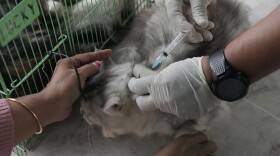From porcupine to the great horned owl, Connecticut’s woodlands come alive after sunset with a wide range of nocturnal animals.
Ginny Apple is a master wildlife conservationist certified by the state Department of Energy and Environmental Protection. She will lecture at the New Haven Museum’s Pardee Morris House on the creatures that thrive in the dark. WSHU’s Sabrina Garone spoke with her about what makes these animals unique and why they’re important.
WSHU: So to start, if you could you just explain what makes an animal nocturnal?
GA: A nocturnal animal is an animal that comes out mostly at night. They might come out a little before dusk and go in a little after dawn, but typically a nocturnal animal is primarily a nighttime animal. The ones that have exclusively stuck to that pattern — skunks, beavers, opossums, and porcupines. A lot of our animals in Connecticut have adjusted to the environment and the shrinking habitat because there's a lot of available food — bird seed in the yards, unsecured garbage. A lot of animals like raccoons, which used to be nocturnal, and even bears would come out. Usually, they were what we call crepuscular — they would come out right before dusk, wander around at night, and then, right after dawn, go back in. That's typical of a bobcat, although they are out all night long too.
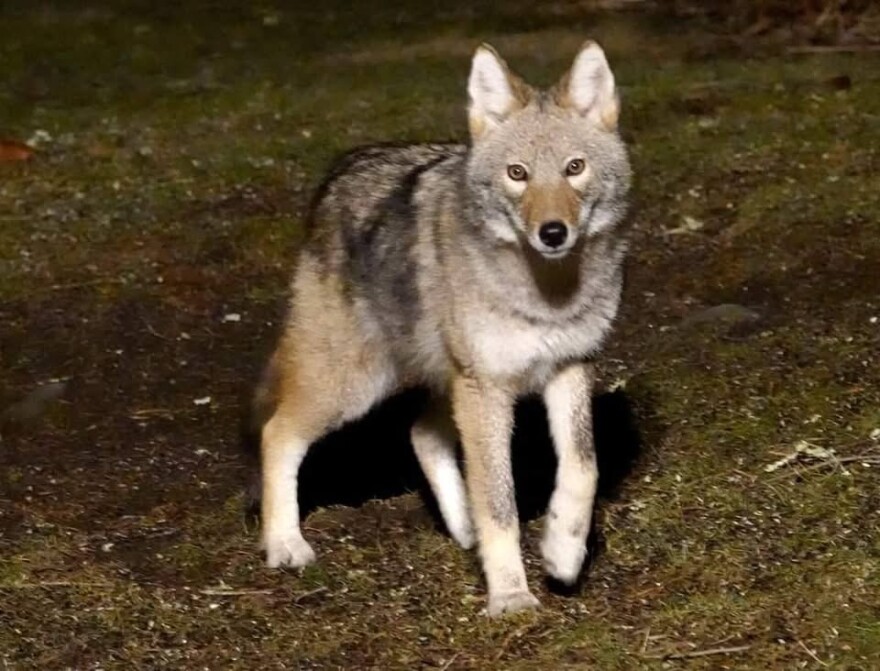
Connecticut is the fourth most fragmented state per capita in the country. That means cut up by roads and buildings, and for a state that's just over three million acres, that presents quite a challenge. Not only is wildlife important to us, but since the rapid growth we've had since COVID, we're seeing a lot of the corridors that animals will use are becoming more suburban and urban.
WSHU: What inspired you to bring more attention to this kind of thing, this influx of new residents to Connecticut?
GA: I feel the more I can put it out there, even though a lot of people who come to my talks might be like-minded, maybe I'll tell them something that they can pass on, and it will help us humans better coexist with these magnificent wildlife that we have in our state.
WSHU: You mentioned a few before, but maybe you can just take us through one more time. What are the key nocturnal species that are called Connecticut home, and what is their role in the ecosystem here?
GA: The small ones like the skunk, opossum, porcupine, other animals — they're mostly prey species, but they do feed on little rodents, they do eat snakes, they also eat a lot of ticks. They eat a lot of things that are around that people might not want in their house. Raccoons, they eat a lot of garbage, obviously, but they also eat a lot of insects, amphibians, frogs, and snakes.
As I always say, does a bear poop in the woods? A bear eats berries and nuts and everything, and as it relieves itself in the woods, it's dispersing all of those plants that it has eaten. So, all these things are valuable for the ecosystem; these young prey species are valuable for the bobcats, coyotes, and foxes that eat them. It keeps the circle of life going. All these things are really interconnected, and I think that's what it's hard for humans to see. Our animals here in our state, in the country, and the world — they are indicators of how healthy the environment is and how it's thriving.
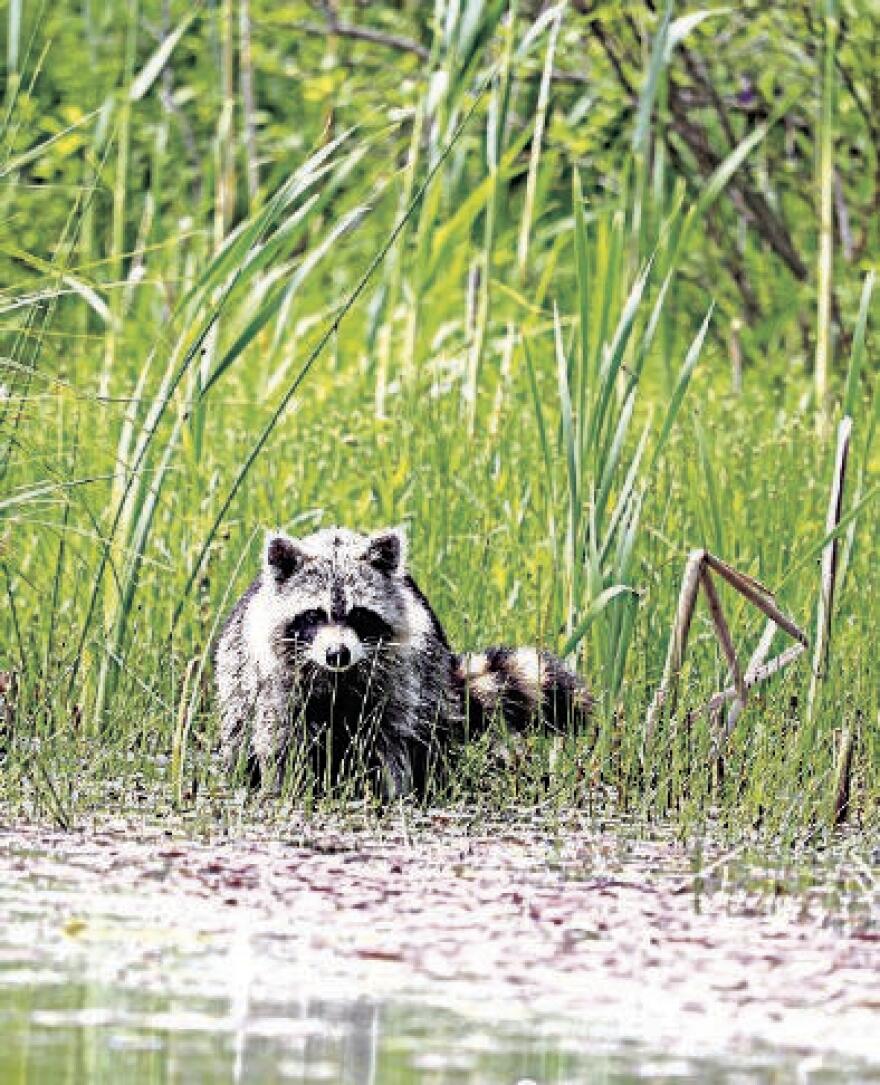
WSHU: You mentioned some human activity like overdevelopment, but what about light pollution? Is that having an impact on nocturnal animals, as well?
GA: Light pollution has a great effect on bats, birds, and a lot of those things that fly. So many people have ring cameras and motion lights, and a lot of our animals are not all that affected by that. They just, kind of, go with the flow.
Now bobcats, they're not roaming around in people's yards looking to eat things like your pets. They're just out there simply hunting and looking for rabbits and squirrels, which they eat most now because our New England cottontail is threatened. The darkness not only gives the prey species a way to hide out and still be able to feed themselves, but it also gives our predators a good way to hide and to sneak up on these various animals, so it keeps the balance of nature going.
WSHU: Is there anything specific that we can celebrate when it comes to nocturnal animals specifically, or any conservation wins that you're really excited about right now?
GA: Well, a lot of our animals that were native to Connecticut have come back because our forests have rebounded. When the colonists came here, they pretty much shot any animal that they thought was a danger to them or to their livestock. Before the 1800s, our native mountain lions and native wolves were gone. By the 1820s, all the black bears were gone. The fisher [cat] was gone from here because its fur was so valuable. Our beavers were completely trapped out, and then by 1850 we were down to 25% forest.
Now, our forests have rebounded. They had been hanging around 60% in Connecticut. Now it's dipped a little below 60%. A lot of that could be, you know, diseases like with the ash trees and the hemlocks, but also some development and land clearing. All these things impact wildlife and where they're gonna be and where they're gonna move.
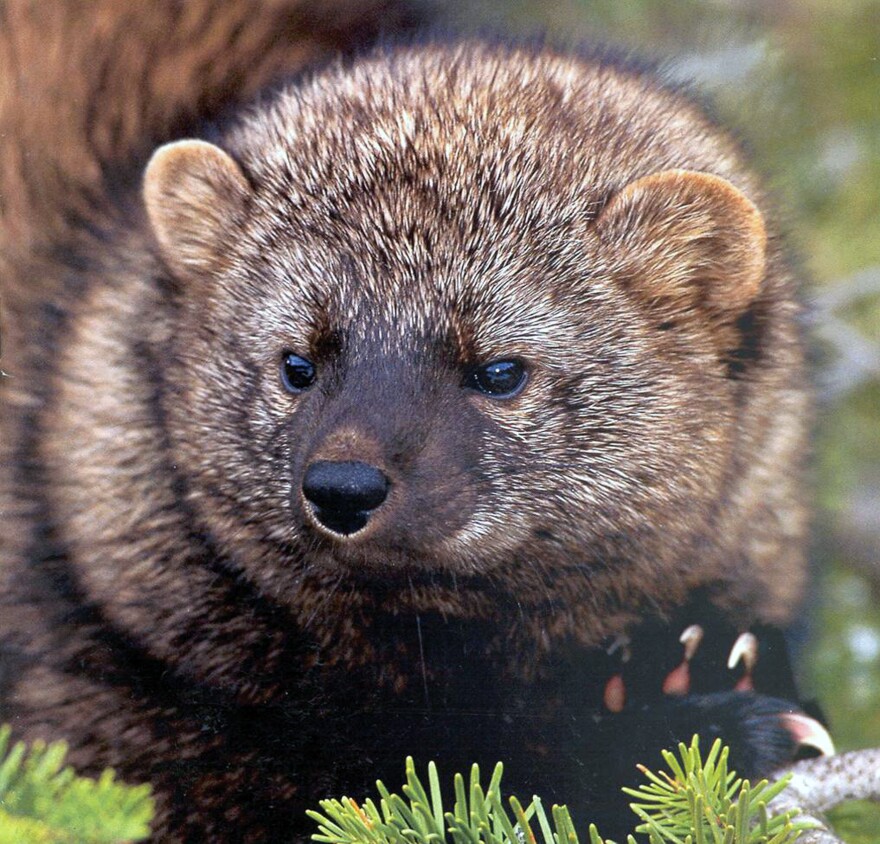
WSHU: I want to circle back to the nocturnal animals, specifically. What are some rare species that the average person might be surprised to learn are hanging out in their backyards at night?
GA: The fisher is the one that's the most unusual for people. It was reintroduced into the state in the 80s with a trade. We traded some turkeys to Maine, and they gave us fishers, so we reintroduced them in the northwestern part of the state. Currently, DEEP is doing a fisher collaring study, because we've noticed a decline in the populations. That's going to start up again in the late fall.
Fisher has a reputation. If you Google "animal screams in the night," you'll get about 25 young men pointing out into the darkness, and they say, "Hear that? That's a fisher cat." Well, it's not a cat, it's a weasel, and it does not scream. It's a silent predator, and it climbs trees, eats eggs, and might get small animals. But it does primarily hunt on the ground, and it is the one animal species in Connecticut that eats and preys on porcupine. Weasels as a species are very fierce. But the screams that people hear at night are 99% red fox. They have many vocalizations, and some sounds like a baby's out in the woods or a woman with these shrill screams and police departments will get calls!
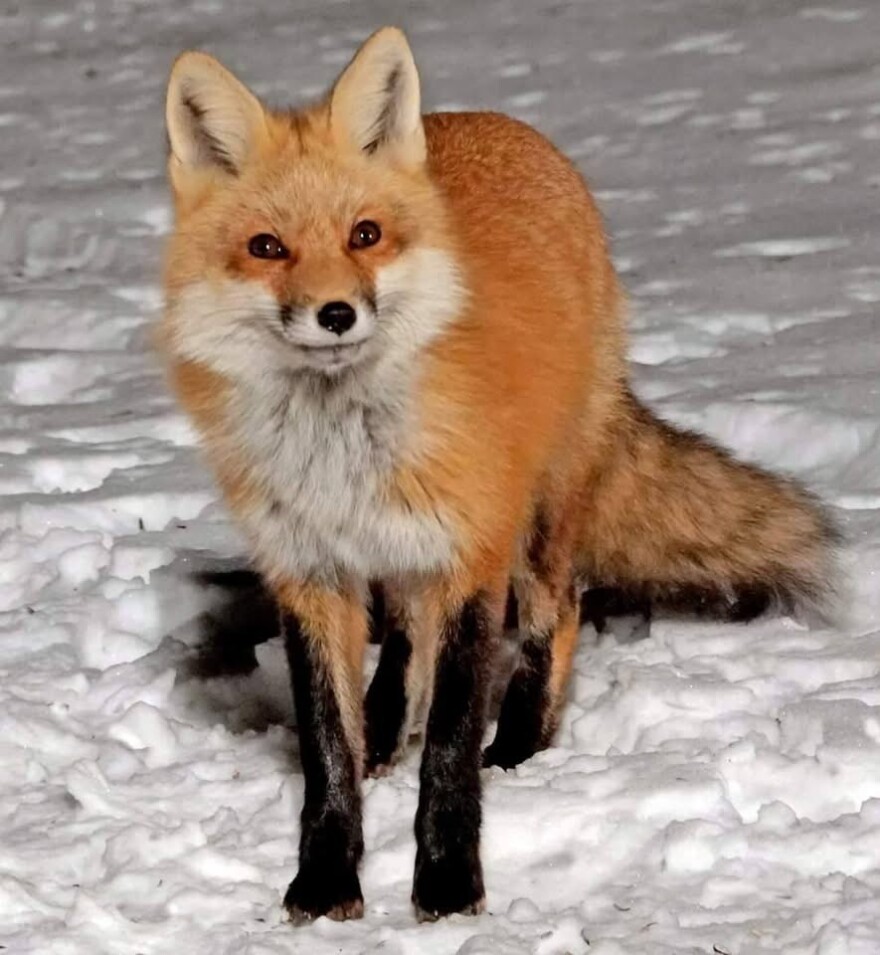
WSHU: Tell me a little about this talk later this week and what people can expect.
GA: I'm very excited to join with the New Haven Museum talking about "things that go bump in the night". There are a lot of different talks that we do, but I think this one is interesting because of the sounds people hear at night. Even young barred owls in the night do this kind of whistle-y scream. And people are like, "Oh my gosh, what is that?" The first time I ever heard it, it was very freaky in the dark. And, you know, when coyotes yelp, everybody's like, "Oh, they killed a rabbit or whatever." Actually, they're family animals, and when you hear them yelping altogether, either a coyote is returned to the family unit or somebody's trying to get in their territory. So, there are a lot of misconceptions. Even bats make little noises, and they're nocturnal. You can hear their wings and these little peep-y noises they make at night, and owls make all kinds of different noises. So, it's just kind of a fun thing, but also a way to educate people about the animals we have, and the animals we have at night, and to show them there's really no reason to fear them.
Visit the New Haven Museum's Pardee Morris House on July 27 for Things That Go Bump in the Night.



